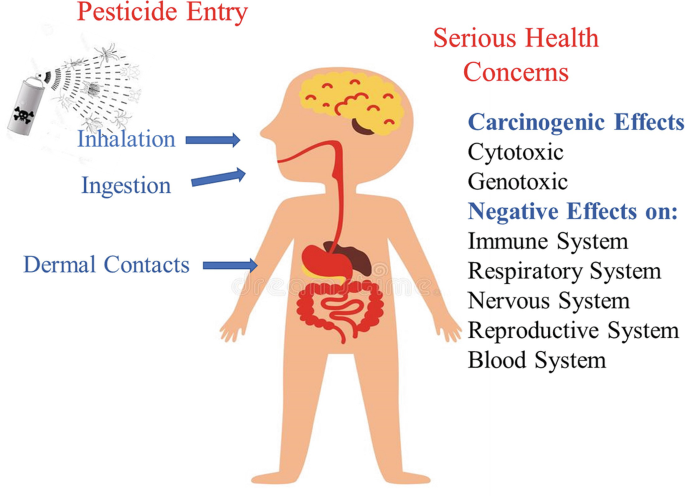The Definitive Guide for Eco Bed Bug Exterminators Dc
The Definitive Guide for Eco Bed Bug Exterminators Dc
Blog Article
The 7-Minute Rule for Eco Bed Bug Exterminators Dc
Table of ContentsEco Bed Bug Exterminators Dc Things To Know Before You BuyThe Best Guide To Eco Bed Bug Exterminators DcThe Ultimate Guide To Eco Bed Bug Exterminators DcUnknown Facts About Eco Bed Bug Exterminators DcGetting My Eco Bed Bug Exterminators Dc To Work
Since chemicals are hazardous, they are additionally potentially hazardous to people, pets, other organisms, and the atmosphere. Therefore, individuals that use pesticides or consistently come in contact with them need to comprehend the relative poisoning, possible health and wellness results, and preventative steps to reduce direct exposure to the products they utilize. Risk, or threat, of utilizing chemicals is the capacity for injury, or the degree of threat associated with utilizing a pesticide under a provided collection of problems.
However, applicators can decrease or virtually remove exposure-- and hence lower risk-- by complying with the label guidelines, utilizing individual safety clothes and equipment (PPE), and taking care of the chemical correctly. More than 95 percent of all chemical direct exposures come from dermal exposure, largely to the hands and lower arms. By wearing a set of unlined, chemical-resistant handwear covers, this sort of exposure can be almost gotten rid of.
The harmful effects that take place from a solitary exposure by any type of path of entrance are called "severe effects." The four courses of exposure are dermal (skin), breathing (lungs), dental (mouth), and the eyes. Intense poisoning is determined by taking a look at the facial poisoning, breathing toxicity, and dental poisoning of examination animals.
Rumored Buzz on Eco Bed Bug Exterminators Dc
Intense poisoning is measured as the quantity or concentration of a toxicant-- the a.i.-- needed to eliminate 50 percent of the animals in a test populace. This procedure is generally revealed as the LD50 (lethal dose 50) or the LC50 (lethal concentration 50). In addition, the LD50 and LC50 values are based upon a single dosage and are recorded in milligrams of pesticide per kg of body weight (mg/kg) of the guinea pig or partly per million (ppm).
The reduced the LD50 or LC50 value of a chemical item, the higher its poisoning to people and pets. Pesticides with a high LD50 go to these guys are the least harmful to human beings if used according to the directions on the item tag. The persistent poisoning of a chemical is identified by subjecting guinea pig to long-term exposure to the active ingredient.
The chronic poisoning of a pesticide is more challenging than acute poisoning to identify with research laboratory analysis. Products are classified on the basis of their relative intense toxicity (their LD50 or LC50 values). Chemicals that are classified as highly toxic (Toxicity Group I) on the basis of either dental, facial, or inhalation poisoning must have the signal words DANGER and poisonous substance published in red with a skull and crossbones symbol plainly showed on the front panel of the package tag.
The severe (solitary dose) oral LD50 for chemical items in this team ranges from a trace total up to 50 mg/kg. Exposure of a couple of declines of a product taken orally might be deadly to a 150-pound individual. https://sitereport.netcraft.com/?url=https://ecobedbugexterminator.com. Some pesticide products have simply the signal word DANGER, which tells you absolutely nothing concerning the intense poisoning, just that the item can cause serious eye damages or extreme skin irritability
Eco Bed Bug Exterminators Dc Things To Know Before You Buy
In this classification, the intense dental LD50 arrays from 50 to 500 mg/kg. A teaspoon to an ounce of this material might be deadly to a 150-pound individual (exterminator). Chemical products categorized as either a little harmful or reasonably harmless (Toxicity Categories III and IV) are required to have the signal word CAUTION on the chemical label

All pesticide toxicity chemical, including the Consisting of, can be found on located product's Material Safety Data Security InformationMSDS). Chemical tags and MSDS can be gotten from merchants or makes - https://sitereport.netcraft.com/?url=https://ecobedbugexterminator.com. The signs of pesticide poisoning can vary from a light skin inflammation to coma or also death.
Individuals likewise vary in their sensitivity to different degrees of these chemicals. Some individuals may show no response to an exposure that might create extreme disease in others (bed bug treatment). As a result of possible health concerns, pesticide users and trainers must recognize the common symptoms and signs of chemical poisoning. The results, or symptoms, of pesticide poisoning can be extensively specified as either topical or systemic.
The 6-Minute Rule for Eco Bed Bug Exterminators Dc
Dermatitis, or swelling of the skin, is accepted as the most generally reported topical effect associated with pesticide exposure. Some people tend to cough, hiss, or sneeze when exposed to chemical sprays.
This signs and symptom usually subsides within a couple of mins after a person is removed from the direct exposure to the toxic irritant. A reaction to a chemical product that triggers someone not just to sneeze and cough but additionally to develop severe acute respiratory system symptoms is more most likely to be a true hypersensitivity or sensitive response.
Systemic effects are rather different from topical results. They commonly take place away from the original factor of call as a result of the pesticide being absorbed into and dispersed throughout the body. Systemic impacts typically consist of nausea, throwing up, fatigue, migraine, and intestinal tract conditions. In sophisticated poisoning cases, the individual might experience adjustments in heart price, problem breathing, convulsions, and coma, which might lead to fatality.
Report this page